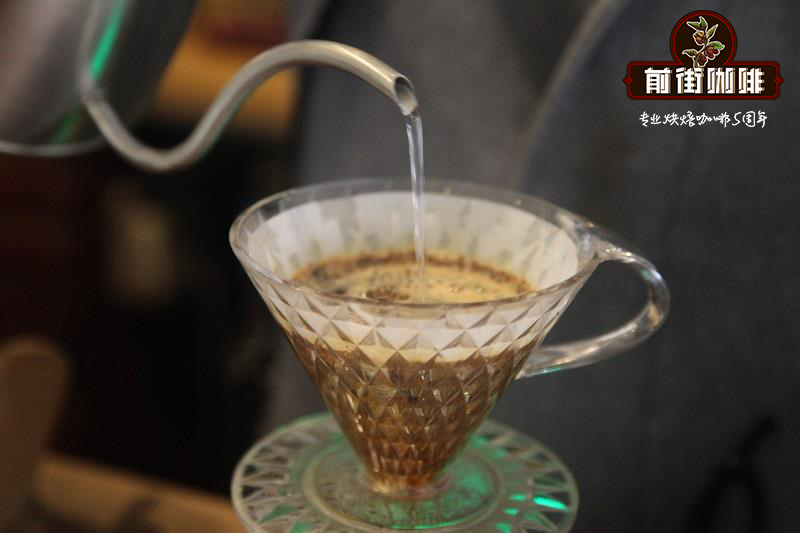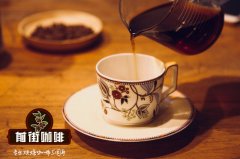Yemeni Coffee Ishmali Haraazi Yemeni Coffee Flavor Features Coffee beans suitable for hand brewing

Professional coffee knowledge exchange more coffee bean information please follow the coffee workshop (Wechat official account cafe_style)
Some people say it is the oldest tree species and others say it is the producing area. At the local market in Haraazi, Yemen, the suppliers of spices, tea, Qat katgrass and coffee say that his coffee beans are special because they are always mixed with very special flavor. Esimar Marie is in the incredible vertical steep boulder area, and coffee is planted side by side with Qat katgrass on etched terraces. She has always had a strong (spicy) personality, with a surprising aroma of red wine.
Property Characteristics: farm characteristics
Farmer Farm owner: Small Holders different small Farmers
Region producing area: Haraazi
Country countries: Yemen Yemen
Farm Size Farm area: 2.8Hectares ha
Altitude altitude: 1840 Murray 2125 meters
Certification certification: None none
Coffee Characteristics: coffee characteristics
Variety varieties: Mainly Jaa'di, also Tuffahi, Dawairi, and Ismaili (Ishmali)
Processing System treatment: Traditional Natural traditional Yemeni roof sun drying
Appearance appearance: 15muri 16 eyes
Top Jury Descriptions judge's comment: the baking degree measured by the cup for 60 seconds at the beginning of the first explosion (Cinnamon)
Aroma / flavor flavor: strawberry, pineapple, cinnamon, clove, red wine, maple syrup, caramel
Acid quality: tannic acid, tartaric acid
Complex complexity and other other: unrestrained fruit wine, velvety taste, chocolate finish, high-profile spice aromas, recommended as hand-made coffee beans
Qianjie Coffee comment: Yimen beans are my favorite. Yishi Mary is not easy to get. The more fragrant the red wine, the better it will be.
It is also located on the Arabian Peninsula of the Asian continent, but it is very close to Africa just across the Red Sea and the Gulf of Aden Gulf of Aden, but other Arab countries do not produce coffee, so the world classifies Yemeni coffee as a member of the North African coffee family. So what is the Yemeni mocha? Mocha is the export port of Yemeni coffee, because it is difficult to name all the tiny sub-producing areas in the history of the coffee trade, even though the coffee produced by these small producing areas is indeed very good. So the sun beans near the place of export, including East Africa, were exported from the port of Mocha to all parts of the world in the early days, and now the port of Mocha has long been silted up and disappeared. Many Ethiopian sun beans also name themselves mocha, such as Haramoka, which we know well. I think this is because its flavor has something in common with Yemeni coffee.
The most correct spelling of mocha coffee should be Al-Mahka, which is the Arabic spelling, but in the end, what you see on the sack is the correct spelling of Mocca or Mocha, regardless of some naming and spelling trivialities, Yemeni coffee is the most unique and expensive coffee in the world, the overall style of [wild] or [natural] coffee flavor is extremely complex, for some people it is spicy and pungent. But in any case, you must try it sometime. Among the top Yemeni coffees bought from Direct Coffee, you will find that you like this unique coffee very much, and if you also fall in love with him, it will be the beginning of a whole new coffee journey.
Yemen is probably the first country in the world to use coffee as a cash crop. It is said that coffee was introduced by Muslim Sufi pilgrims from Ethiopia in the 6th century. Yemeni coffee culture is different from other regions. Exporters do not buy directly from the farm, but from the middle market dealers, and the coffee received by the local market merchants contains pods. The whole dried coffee cherry is usually stored in the cellar, and the special flavor of the world's favorite Yemeni coffee may come from their ancient way of trade. Yemeni coffee farmers have not suffered from trading through the market. The main reason is that the local coffee cultivation land is limited, coupled with high latitudes and limited water resources, its production is very scarce, and the demand for Yemeni coffee is very high. Keep the price of Yemeni coffee high.
It is not easy to grow coffee in Yemen. Most farmland grows Qat grass, which is said to have a mild and refreshing effect. This plant absorbs water from the ground and breaks the underground aquifer. Growing coffee is not the same as hoping that some changes can be made to stop farmers from growing cat grass. But Qat's profit is tens of times that of coffee, and coffee beans can only be persuaded by the government to keep a small area under Qat. Maybe this also gives you a lot of room to imagine.
The total number of coffee farms is about
330000
Harvest time
Major crops from October to December, second harvest in April
Number of people engaged in coffee
1530000
Refining method
Grading
Naturally dried Arabian beans; no regulatory body, no grading system
Planting shading mode
Planted in the wild, shaded but not documented, coffee is grown on terraces
Organic authentication
No certification: all coffee is grown organically according to the ancient method, and pesticides containing chemicals are not used.
Major coffee producing areas
Mattari Matali, Hirazi Hilazi, Haimi Haimi, Saihi Saehi, Ismaili Yishi Mary, Sharasi Salazi, Dhamari Damali, Rimy Remy
Output ranking
Asia 10th
World No. 46
Tree species
More than 10 special native mocha species were introduced from Ethiopia
The introduction of coffee
Introduced in the 6th century or earlier by the Hara region of Ethiopia, the native place of Arabica, Yemen is the first coffee country to start growing since Ethiopia.
Important Notice :
前街咖啡 FrontStreet Coffee has moved to new addredd:
FrontStreet Coffee Address: 315,Donghua East Road,GuangZhou
Tel:020 38364473
- Prev

Yemeni coffee flavor-Shanani Yemeni coffee origin introduces coffee beans suitable for hand brewing
Professional coffee knowledge exchange more coffee bean information please follow Coffee Workshop (Wechat official account cafe_style) Property Characteristics: farm characteristics Farm Farm name: Small producers small producing Group Grade Grade: naturally dried Arabica beans, no regulatory agency, no grading system Region producing area: Sanaani Shanani Country country
- Next

Geisha coffee beans suitable for hand-brewing at Santa Ferrisa Manor in Guatemala
Professional coffee knowledge exchange more coffee bean information please follow coffee workshop (Wechat official account cafe_style) flavor description: strong tropical fruit aroma and flavor, guava, sweet papaya and so on. Elegant and lingering floral aromas, rose finish, citrus acid and Body as delicate as cream and syrup. Guatemala Santa Felisa Manor Geisha Coffee country: dangerous
Related
- Detailed explanation of Jadeite planting Land in Panamanian Jadeite Manor introduction to the grading system of Jadeite competitive bidding, Red bid, Green bid and Rose Summer
- Story of Coffee planting in Brenka region of Costa Rica Stonehenge Manor anaerobic heavy honey treatment of flavor mouth
- What's on the barrel of Blue Mountain Coffee beans?
- Can American coffee also pull flowers? How to use hot American style to pull out a good-looking pattern?
- Can you make a cold extract with coffee beans? What is the right proportion for cold-extracted coffee formula?
- Indonesian PWN Gold Mandrine Coffee Origin Features Flavor How to Chong? Mandolin coffee is American.
- A brief introduction to the flavor characteristics of Brazilian yellow bourbon coffee beans
- What is the effect of different water quality on the flavor of cold-extracted coffee? What kind of water is best for brewing coffee?
- Why do you think of Rose Summer whenever you mention Panamanian coffee?
- Introduction to the characteristics of authentic blue mountain coffee bean producing areas? What is the CIB Coffee Authority in Jamaica?

